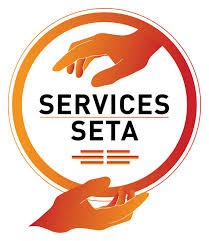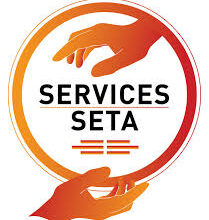SETA Learnerships in South Africa: A Complete Guide for 2025

Finding a job in South Africa can be a real challenge, especially for young people with little or no work experience. Many employers require practical skills, yet many school leavers and graduates have not had the chance to gain them. This is where SETA Learnerships come in.
SETA learnerships are structured training programmes that combine theoretical learning with practical workplace experience. They are designed to provide skills development, open career opportunities, and help address the shortage of skilled workers in different industries.
In this article, we’ll break down what SETA learnerships are, how they work, their benefits, and how you can apply for one.
What is a SETA?
SETA stands for Sector Education and Training Authority. In South Africa, there are 21 different SETAs, each focusing on a specific sector of the economy. For example:
- BANKSETA – Banking sector
- CETA – Construction sector
- MICT SETA – Media, Information, and Communication Technology
- HWSETA – Health and Welfare sector
- ETDP SETA – Education, Training and Development Practices
Each SETA is responsible for identifying the skills needed in its sector and ensuring that training opportunities, such as learnerships, are available to meet those needs.
What is a SETA Learnership?
A learnership is a structured learning programme that runs over a set period, usually 12 months, and leads to a nationally recognised qualification registered with the National Qualifications Framework (NQF).
Learnerships include two key components:
- Theoretical training – Classroom or online learning provided by a training institution.
- Practical workplace experience – On-the-job training at a company within the relevant sector.
This combination ensures that learners not only gain knowledge but also develop the skills required to perform in real work environments.
Who Can Apply for a SETA Learnership?
SETA learnerships are designed to provide opportunities to a wide range of South Africans. You may qualify if you are:
- A youth between 18 and 35 years old.
- Unemployed and looking for a chance to gain skills.
- Employed but wanting to improve your qualifications.
- In possession of Grade 12 (Matric) or a lower qualification (depending on the programme).
Many learnerships also prioritise candidates from previously disadvantaged backgrounds, including women and people living with disabilities.
How to Apply for SETA Learnerships in South Africa (2025 Guide)
Finding employment in South Africa is not always easy, especially for young people who do not have much work experience. One of the best ways to gain both practical skills and a recognised qualification is by joining a SETA Learnership. But many applicants get stuck on one question: How do you actually apply?
This guide will walk you through the full process of applying for a SETA learnership in 2025, from choosing the right sector to submitting your application.
Step 1: Understand What a SETA Learnership Is
Before you apply, you need to understand what a learnership involves. A learnership is a structured training programme that combines classroom learning with practical workplace experience. At the end of the programme, which usually lasts 12 months, you will receive a National Qualifications Framework (NQF) registered qualification.
You also receive a monthly stipend, which helps cover basic expenses like transport. While this is not a full salary, it ensures that you earn while you learn.
Step 2: Choose the Right SETA for Your Career Goals
There are 21 Sector Education and Training Authorities (SETAs) in South Africa, each linked to a specific industry. For example:
- BANKSETA – Banking and finance
- MICT SETA – Information Technology and Communication
- CETA – Construction
- HWSETA – Health and Welfare
- ETDP SETA – Education and Training
👉 The first step in applying is to decide which sector matches your interests and career goals. For instance, if you enjoy working with computers, you may want to apply through MICT SETA.

Step 3: Check for Available Learnerships
Each SETA regularly advertises available learnership opportunities. Here’s where you can look for them:
- The official website of the SETA for your sector.
- Company websites (many private companies partner with SETAs to host learners).
- Local newspapers and online job portals.
- Career centres, municipal offices, or Department of Labour centres.
It is important to regularly check these platforms so you don’t miss out on application deadlines.
Step 4: Prepare the Required Documents
When you find a learnership that suits you, you’ll need to prepare the following documents:
- Updated CV – Keep it professional and highlight your education, skills, and any volunteer or part-time work.
- Certified copy of your South African ID – Make sure it is clear and valid.
- Certified copy of your Matric certificate or the highest grade completed.
- Any other qualifications (if applicable).
- Proof of residence – Sometimes required to show your location.
Tip: Always keep several certified copies ready. This makes applying much quicker.
Step 5: Complete the Application Form
Most SETAs will have an official application form available for each learnership programme. This can often be downloaded from the SETA’s website or collected from their offices.
When filling out the form:
- Be accurate and honest with your details.
- Double-check your ID number, contact information, and education history.
- Make sure all required sections are completed before submission.
Step 6: Submit Your Application
Once your documents are ready and your form is complete, you can submit your application. Depending on the SETA, applications can be:
- Online – Uploaded via the SETA’s official website or company career portal.
- Email – Sent to the provided recruitment email address.
- In person – Delivered to the SETA office, Department of Labour, or company offices.
Always submit before the closing date. Late applications are usually not considered.
Step 7: Prepare for Interviews or Assessments
If your application is successful, you may be invited for:
- An interview – To assess your motivation and communication skills.
- A basic assessment test – To evaluate your literacy, numeracy, or problem-solving abilities.
👉 Tip: Before the interview, research the company and understand the learnership you applied for. Be ready to explain why you want to join.
Step 8: Sign the Learnership Agreement
If you are accepted, you will be required to sign a learnership agreement. This is a legal contract between you, the SETA, and the employer. It outlines:
- The duration of the learnership (usually 12 months).
- Your responsibilities as a learner.
- The stipend you will receive.
- The training and workplace exposure you will get.
Make sure you read and understand the contract before signing.
Common Mistakes to Avoid
Many applicants miss opportunities because of small errors. Here are some things to avoid:
- Submitting incomplete or incorrect documents.
- Missing the closing date.
- Using an unprofessional email address for applications.
- Not following up after applying.
By being careful and professional, you improve your chances of being selected.
Final Thoughts
Applying for a SETA learnership is a smart move if you are a young South African looking to gain experience, earn a qualification, and improve your career prospects.
The process is simple:
- Choose your sector.
- Check available opportunities.
- Prepare your documents.
- Complete the application form.
- Submit on time.
- Prepare for interviews.
With determination and preparation, a SETA learnership can be your first step toward building a successful future.





